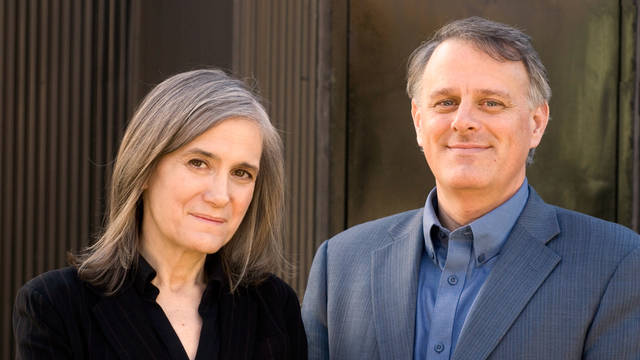
By Amy Goodman & Denis Moynihan
Devastating tornadoes hit Kentucky and neighboring states as darkness descended on Friday. The supercell thunderstorm tore a 200-mile path, leaving death and destruction in its wake. The National Weather Service had been issuing warnings and severe weather alerts for over 36 hours. At the Mayfield Consumer Products candle factory, workers on the evening shift were scared. NBC News reported that managers told them they’d be fired if they left to seek shelter elsewhere (a charge the factory owner disputes). Eight workers there were killed and many injured when a massive EF4 tornado flattened the factory. An Amazon warehouse in Illinois was flattened, killing six workers. The death toll across six states is now at least 90. The wreckage and loss of life from this storm is yet another symptom of how our fossil fuel addiction heats the planet and drives disasters.
“The severity and the amount of time these tornadoes spent on the ground is unprecedented,” Deanne Criswell, the FEMA administrator, said on CNN. “This is going to be our new normal. The effects that we’re seeing from climate change are the crisis of our generation.”
Michael Mann, director of the Earth System Science Center at Penn State University, reinforced that last point, speaking on the Democracy Now! news hour:
“This isn’t a natural disaster. This is a disaster exacerbated by human-caused climate change…There were winds measured at more than 300 miles per hour. Debris was found 30,000 feet up in the atmosphere, and it traveled nearly 200 miles, something we’ve never seen before.”
As President Biden visited Mayfield on Wednesday, a massive wind storm swept out of the Rocky Mountains across the Plains states, blinding travelers in clouds of dust and overturning tractor trailers as they drove. Record high temperatures fanned the storm, leaving half a million without power and causing the first December tornadoes in Minnesota’s recorded history.
Eight thousand miles away, in Kampala, Uganda, Vanessa Nakate is at the forefront of the global movement for climate justice. She founded Youth for Future Africa after joining in the Fridays for Future climate strike movement launched by Swedish climate activist Greta Thunberg. A photo of Vanessa with Greta and other youth climate strikers at the World Economic Forum in Davos, Switzerland was published with the four white teens pictured, but Vanessa cropped out. The Associated Press claims a house behind Vanessa made that side of the photo cluttered, but Vanessa saw it as another example of the racism deeply interconnected with the climate crisis. The title of her new book, “A Bigger Picture: My Fight to Bring a New African Voice to the Climate Crisis,” was inspired by the incident.
“This was the first time in my life that I understood the definition of the word ‘racism,’” she explained on a social media post, adding on Democracy Now! “Africa is the least emitter of carbon, but we are the most affected by the climate crisis. But you erasing our voices won’t change anything…we are not missing. We are just unheard.”
Vanessa’s trajectory as an activist has been meteoric, from staging a small protest in Kampala in January, 2019 with five siblings and cousins to speaking before a hundred thousand activists at the COP26 protest rally in Glasgow in November. Her book is both a cri de cœur for climate action and a practical guide on how the climate justice movement can and must center the voices of those most impacted by the climate emergency. Throughout her book, on social media and in public speeches, Vanessa Nakate amplifies the names and voices of other young African climate activists, revealing a vibrant but largely unheard sector of the movement.
“We cannot have climate justice if the voices from the most affected communities are continuously being cropped out,” she continued, on Democracy Now! “That doesn’t just erase my story or my experience; it…literally erases the existence of the challenges that I’m seeing in my country and the problems people are facing because of the climate crisis.”
A key failure of the United Nations climate change negotiations that Vanessa writes about has been the failure of wealthy nations to deliver on their promised $100 billion per year to help developing nations develop renewably. Professor Michael Mann agrees.
“We don’t want them to go through the fossil fuel stage of economic development. We can’t afford for that to happen,” Mann said. “So we have to provide them with the financing and the resources to develop clean energy technology. That means that the United States, the EU and other industrial countries need to ante up.”
The global climate emergency is spawning catastrophes everywhere, from tornadoes in Kentucky to floods in Uganda. Stemming irreversible climate change is still possible, but only with urgent, coordinated and inclusive action by us all.












Media Options